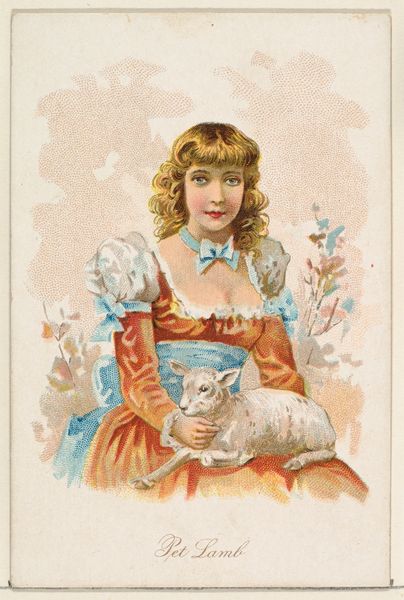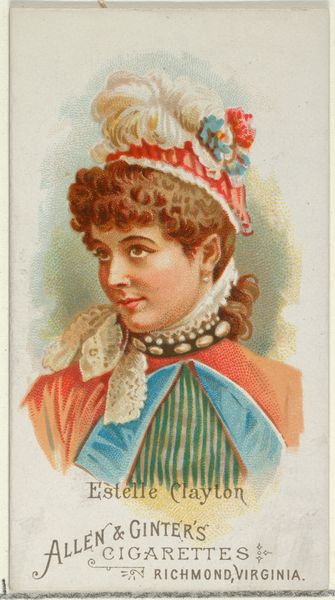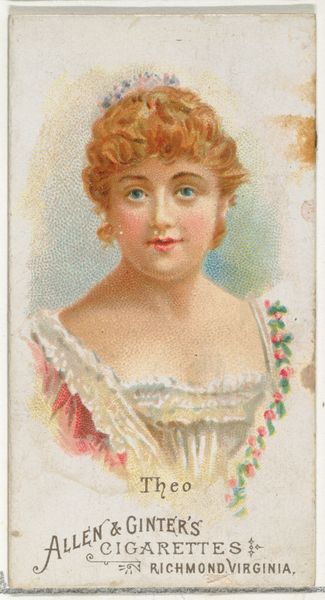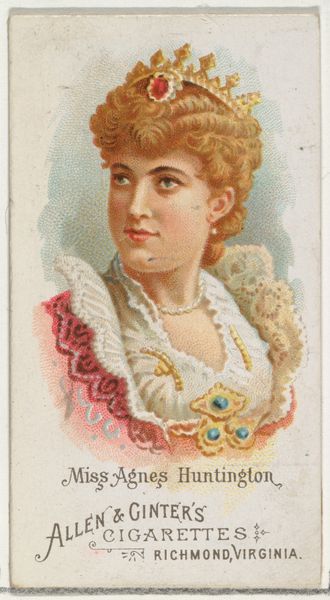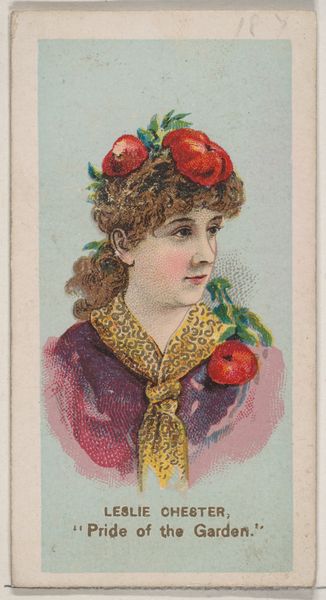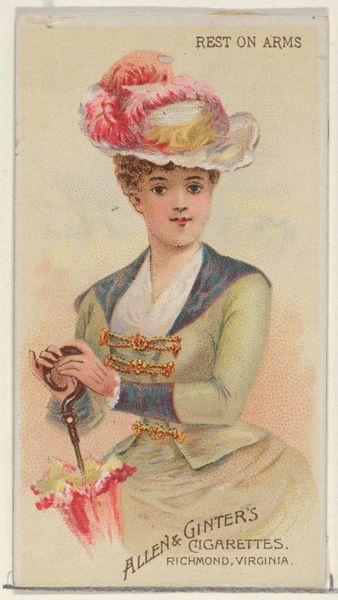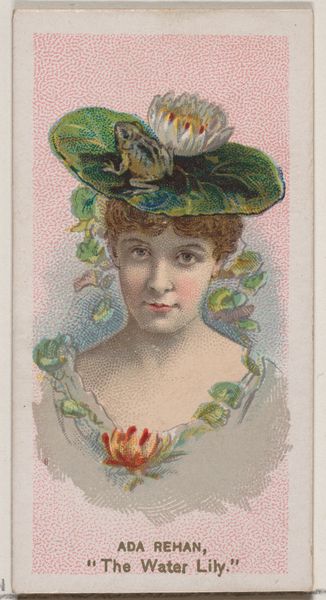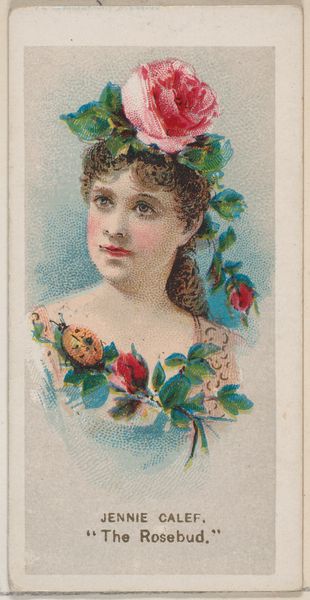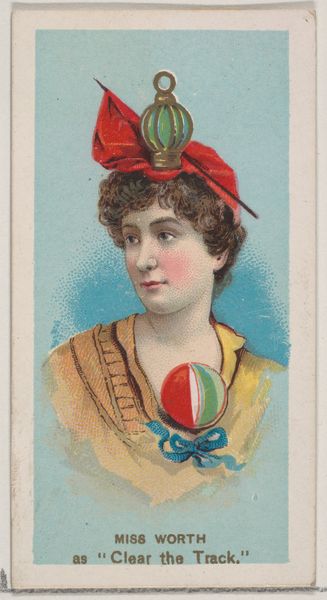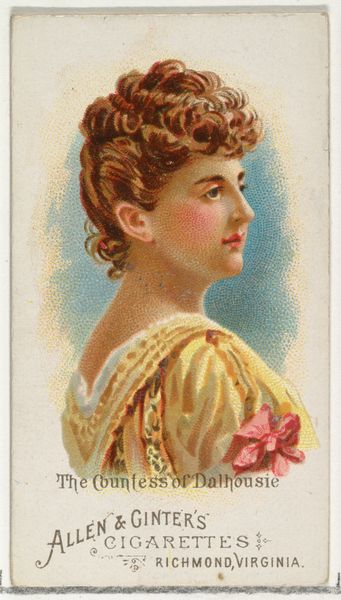
Mary Queen of Scots, from Leaders series (N222) issued by Kinney Bros. 1888
0:00
0:00
drawing, coloured-pencil, print
#
portrait
#
drawing
#
coloured-pencil
#
16_19th-century
#
antique
# print
#
coloured pencil
#
19th century
#
history-painting
#
academic-art
Dimensions: Sheet: 2 3/4 × 1 7/16 in. (7 × 3.7 cm)
Copyright: Public Domain
Curator: Well, isn’t this an intriguing artifact! Before us is a printed card, made with colored pencil, titled “Mary Queen of Scots, from the Leaders series,” dating back to 1888. The Kinney Brothers Tobacco Company, of all people, issued it. It's currently housed at The Met. Editor: The colors are much more vibrant than I expected for something from the late 19th century, almost confectionary. And look at her: so regal, but with a sadness around the eyes that even that rather severe ruff can't quite disguise. Curator: That touch of sadness is a key aspect of Mary's iconic status. The Victorians especially were fascinated by her tragic life. Here, Kinney Brothers taps into that fascination, offering a romanticized image of a powerful woman undone by circumstance and politics. I wonder what people smoking tobacco thought about her as they saw the card. Did she spark dreams? Make them anxious about life? Editor: It makes me think about how tobacco companies historically appropriated and, dare I say, commodified women and feminine iconography to push their products. The ‘leaders’ series title, too, feels rife with contradiction, given Mary's ultimate fate, or lack of agency. What statements are the makers trying to express in their art? Curator: The details, of course, reveal even more. The thistle—a proud emblem of Scotland, placed next to her shield…almost as if offering her a defense, and further proof of the power that this portrait wants to show. It’s a symbol of resilience, but also perhaps a subtle commentary on her prickly relationships, which inevitably caused her downfall. Editor: Precisely. Consider the semiotics, how her story—that emblem, even the very act of its commodification by a tobacco company—intersects with a broader patriarchal narrative. Mary Queen of Scots—her beauty, her political challenges, and even her execution were wrapped into marketing strategies for consumption. The lion inside the crest feels less defensive, and more of an expression of who others wanted to perceive in her. Curator: It really adds an extra layer of meaning to something as simple as a tobacco card. In fact, for all the attention focused on leaders as such, I believe it makes a powerful and ironic comment on the cost of wielding it. Editor: Absolutely. A stark reminder that even within historical veneration, critical examination and contextualization are not optional; they're absolutely essential.
Comments
No comments
Be the first to comment and join the conversation on the ultimate creative platform.
